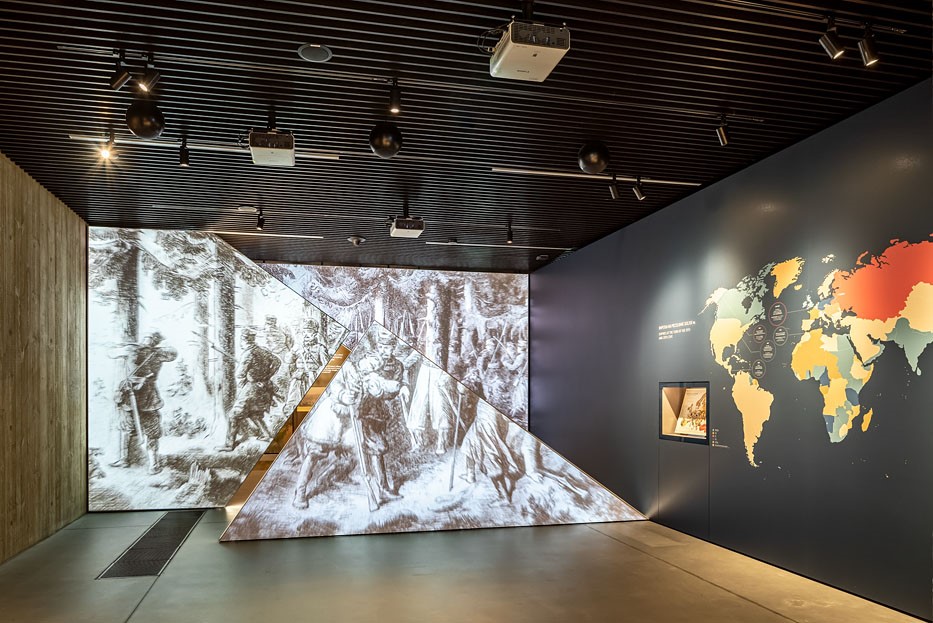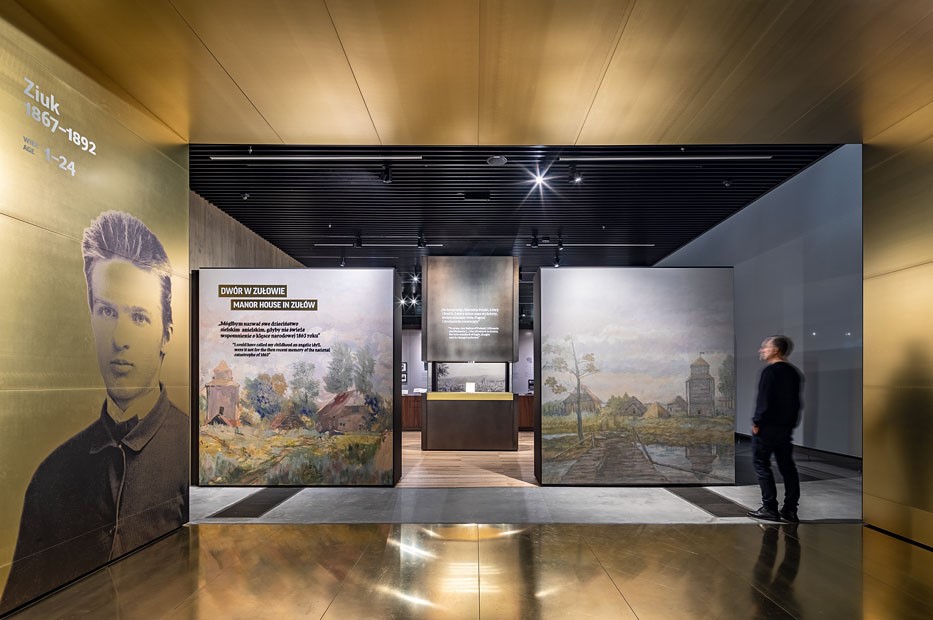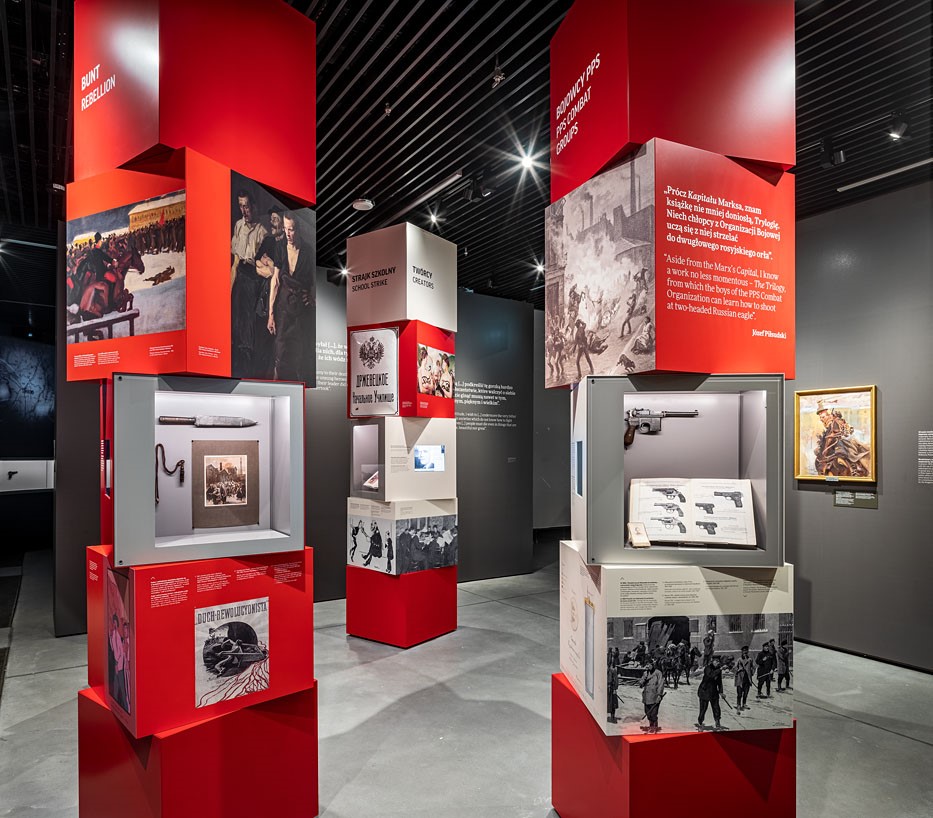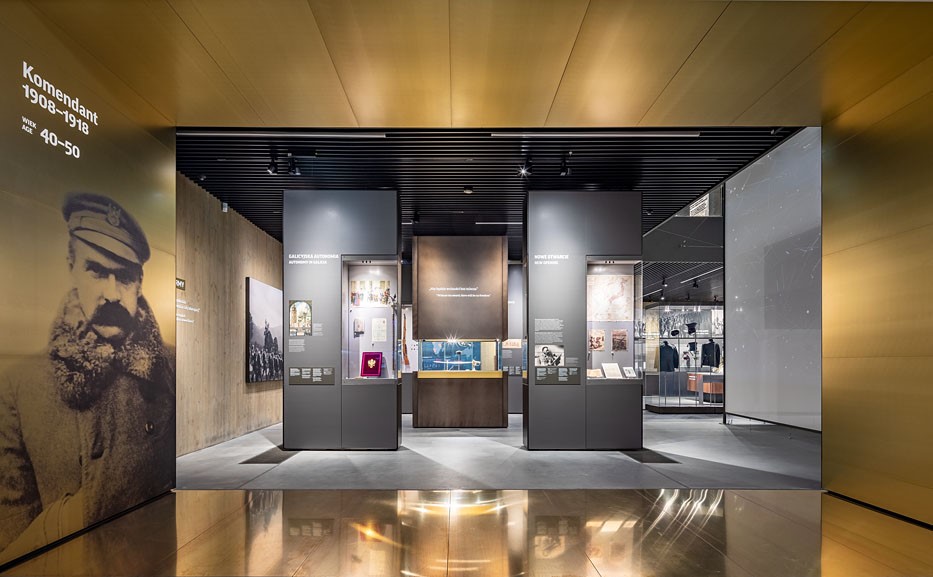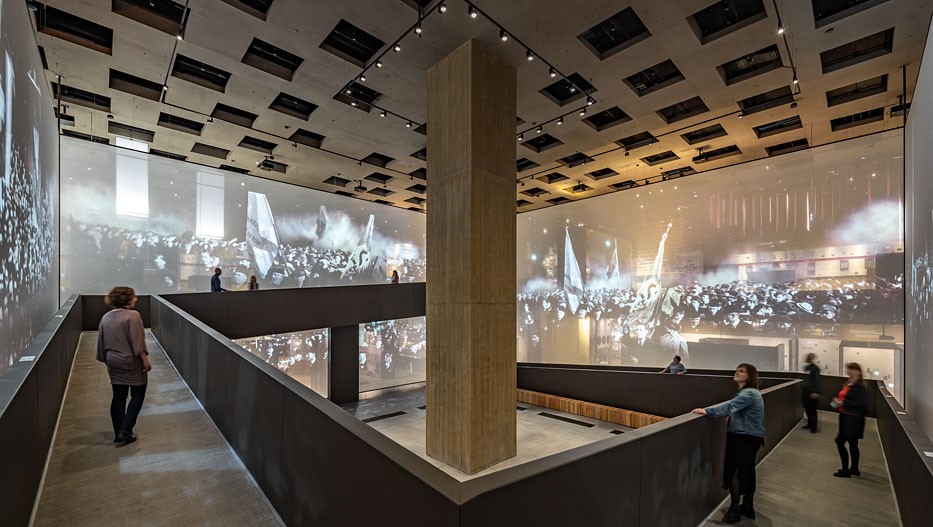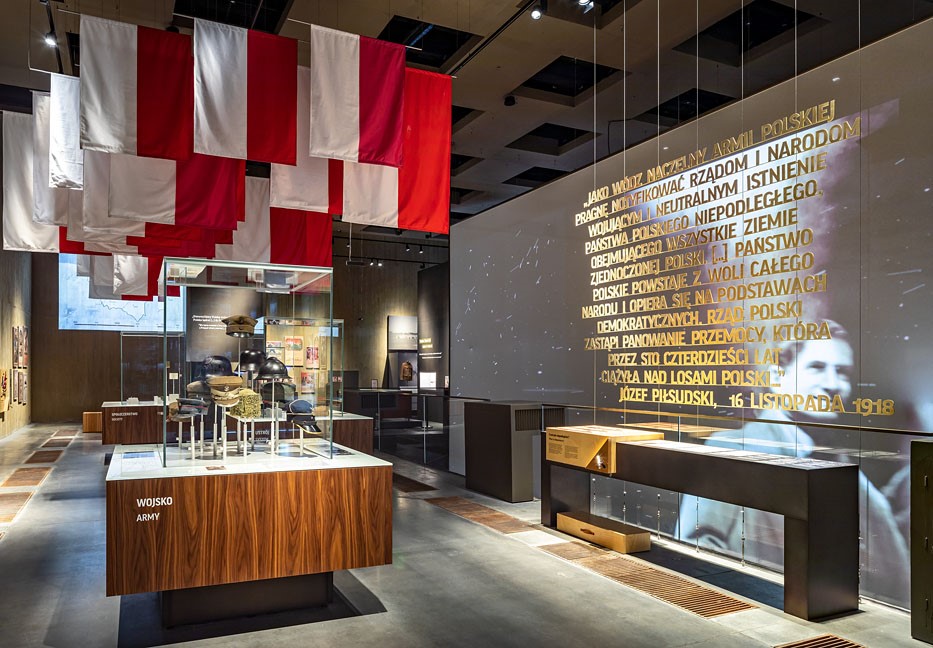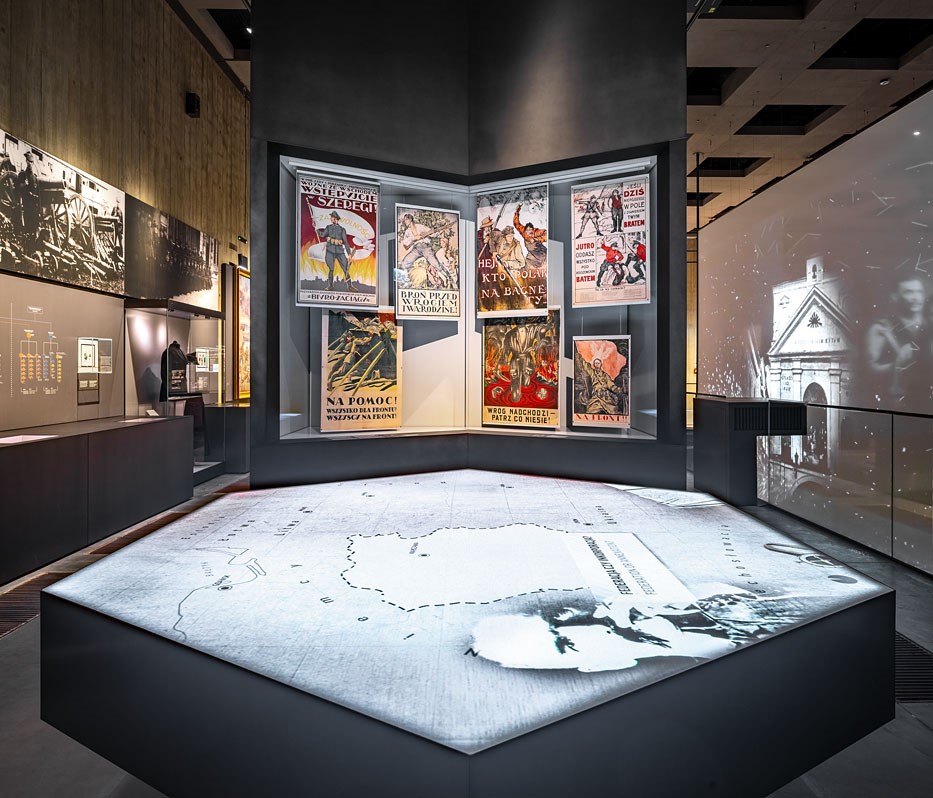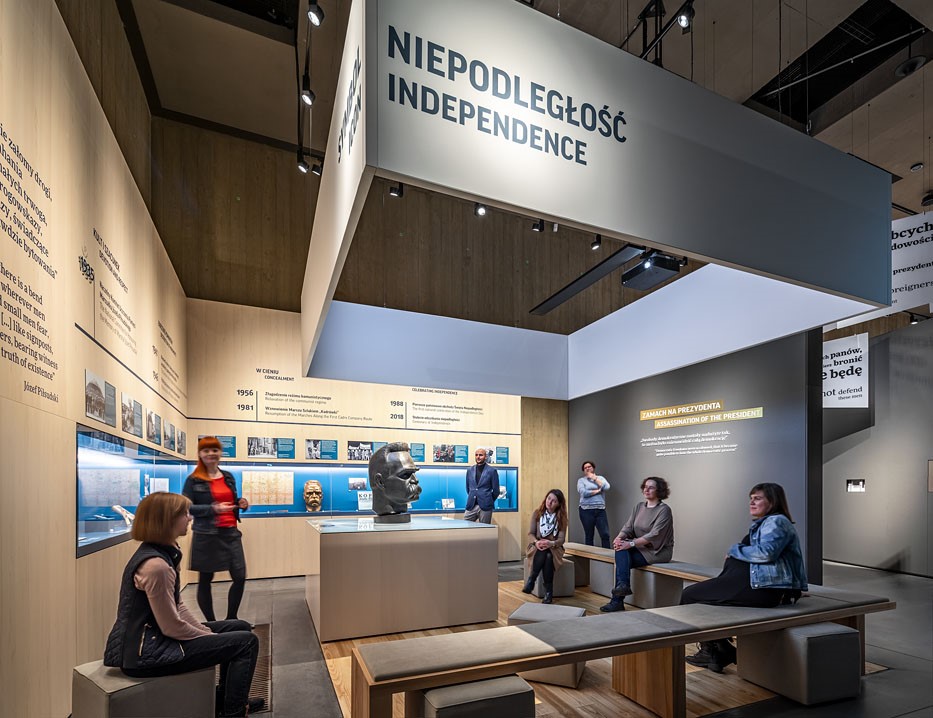PERMANENT EXHIBITION AT THE JÓZEF PIŁSUDSKI MUSEUM IN SULEJÓWEK
TYPE OF INVESTMENT: PUBLIC FACILITY
INVESTOR: THE JÓZEF PIŁSUDSKI MUSEUM IN SULEJÓWEK
LOCATION: SULEJÓWEK, POLAND
AUTHORS: CONSORTIUM OF COMPANIES: RALPH APPELBAUM ASSOCIATES, INC., WXCA, PLATIGE IMAGE
WXCA TEAM: SZCZEPAN WROŃSKI, MARTA SĘKULSKA-WROŃSKA, PAWEŁ GRODZICKI, KRZYSZTOF BUDZISZ, MAŁGORZATA DEMBOWSKA, PIOTR ŁOSEK, MICHAŁ LIPIEC
RALPH APPELBAUM ASSOCIATES Inc. TEAM: TIM VENTIMIGLIA, FRANK FORELL, ANNA DERACH, PAULINA SAMARDAKIEWICZ, JACEK SKOLIMOWSKI, STEFKA SIMEONOVA, LISA NAUMANN
PLATIGE IMAGE TEAM: KRZYSZTOF NOWORYTA, JAN POMIERNY, KAROLINA PANASIUK, BARBARA BUGALSKA, MARCIN KOBYLECKI, MARTA STANISZEWSKA, TOBIASZ PIĄTKOWSKI
AWARDS: 1st PLACE IN THE INTERNATIONAL COMPETITION FOR THE DEVELOPMENT OF THE CONCEPT OF THE PERMANENT EXHIBITION AT THE JÓZEF PIŁSUDSKI MUSEUM IN SULEJÓWEK
Discussion space
Where does the strength of the individual come from, which, carried by vision, changes the course of history? The narrative exhibition at the Józef Piłsudski Museum in Sulejówek entitled „For the Republic of Poland. Józef Piłsudski 1867-1935” tells about the phenomenon of the Marshal, his visions, values, as well as about the road to freedom and the fight to maintain independence. It is a space of ideas, discussions, actions, just as the life of Józef Piłsudski was filled with words and courageous actions.
The exhibition consists of 6 galleries presenting the successive stages of the Marshal’s life. This place is to present in all its complexity both the life of a national hero, the myths that have grown up around his character, as well as the heritage of Polish independence. The story serves not only to commemorate people and events from the past, but also inspires to constantly search for new answers to the questions that run through the exhibition.
Sightseeing path
The path of the exhibition passes through chronologically arranged galleries and circles around the central space clockwise. The beginning of each gallery is marked by specially designed introductory thresholds, through which, like through a gate, visitors pass.
The chronological axis ordering the narrative of the exhibition is determined by the successive stages of the Marshal’s biography. In the „Ziuk” gallery, visitors will get to know Józef Piłsudski from his childhood and youth spent in Zułów, Vilnius and Kharkov, underground activities and exile to Siberia. The „Wiktor” gallery tells the story of Józef Piłsudski’s underground activities in the ranks of the Polish Socialist Party, „Komendant” – about the creation of the military-independence movement in Galicia, „Chief” – about the armed struggle for independence and the borders of the Republic of Poland, and „Marshal” about the political activity conducted by Piłsudski after the May coup in 1926. The sixth – „Symbol” – refers to myths and legends built around the figure of Piłsudski and deals with the impact of the Marshal’s actions on the shape of contemporary Poland. It is exceptionally presented in three scenes, placed in different places between biographical galleries.
The sightseeing path leads through two levels around the central exhibition space, which in its form reflects the geometric conciseness of the building’s architecture. The concept of the exhibition clearly refers to the design of the museum, so that the coherence and complementarity of the entire spatial assumption is legible. The space located in the central part of the exhibition hall has been separated by semi-transparent screens on which a multimedia presentation with an impression related to regaining independence is displayed. It is located in the middle of the sightseeing path and connects the two levels of the exhibition by means of a ramp.
Exhibits
The most important in conducting stories about the marshal are exhibits, collected souvenirs. Multimedia has an auxiliary function and its occurrence is limited to the necessary minimum. The exception to this rule, which deserves attention, involves unique on a global scale screens placed in the central space of the exhibition. Their dimensions are 9 m x 18.6 m. In immersive spaces, multimedia shows are presented in such a way as to draw the viewer’s attention to the narrative, engage the senses and create a chance to experience the story. The authors of the exhibition put great emphasis on obtaining a sense of authenticity so that visitors could become witnesses of the discussed events.
The exhibition of the Józef Piłsudski Museum in Sulejówek is dominated by dark, rich in shades of colours, inspired by Polish propaganda posters from the Polish-Bolshevik war. Natural materials were mostly used to build the exhibition space, such as concrete with a warm, sandy colour, wood with visible rings, but also steel and brass, which emphasizes the most important elements of the exhibition.
